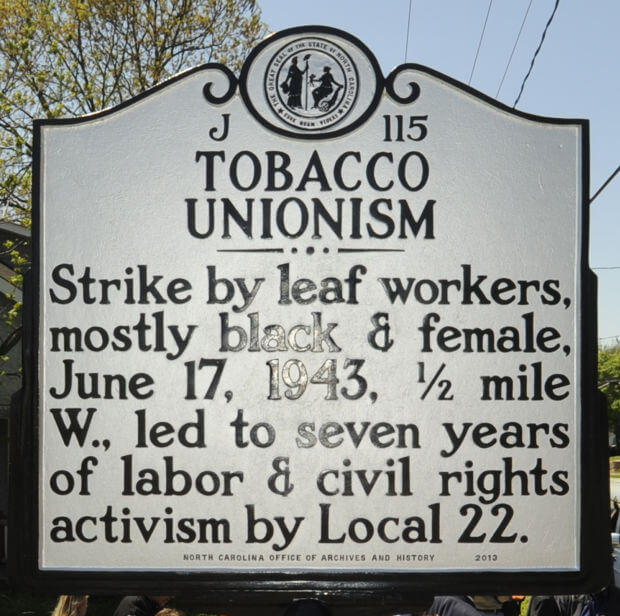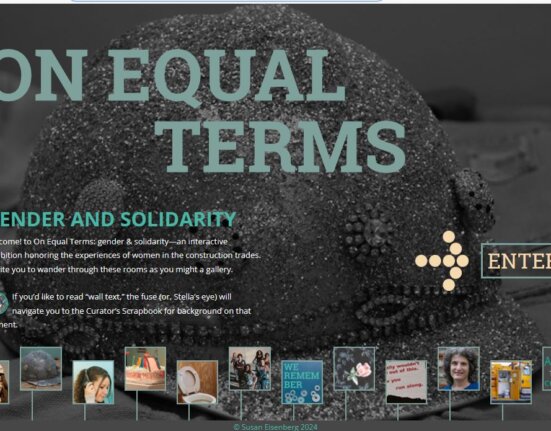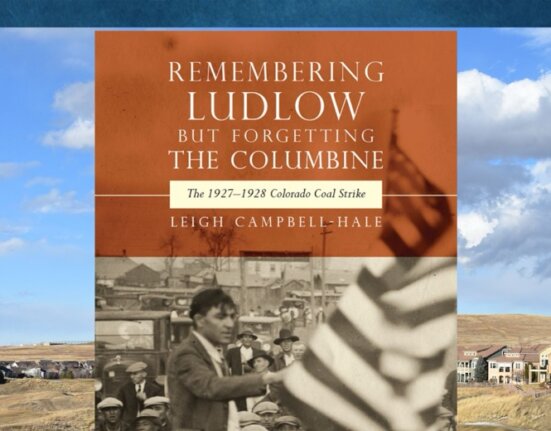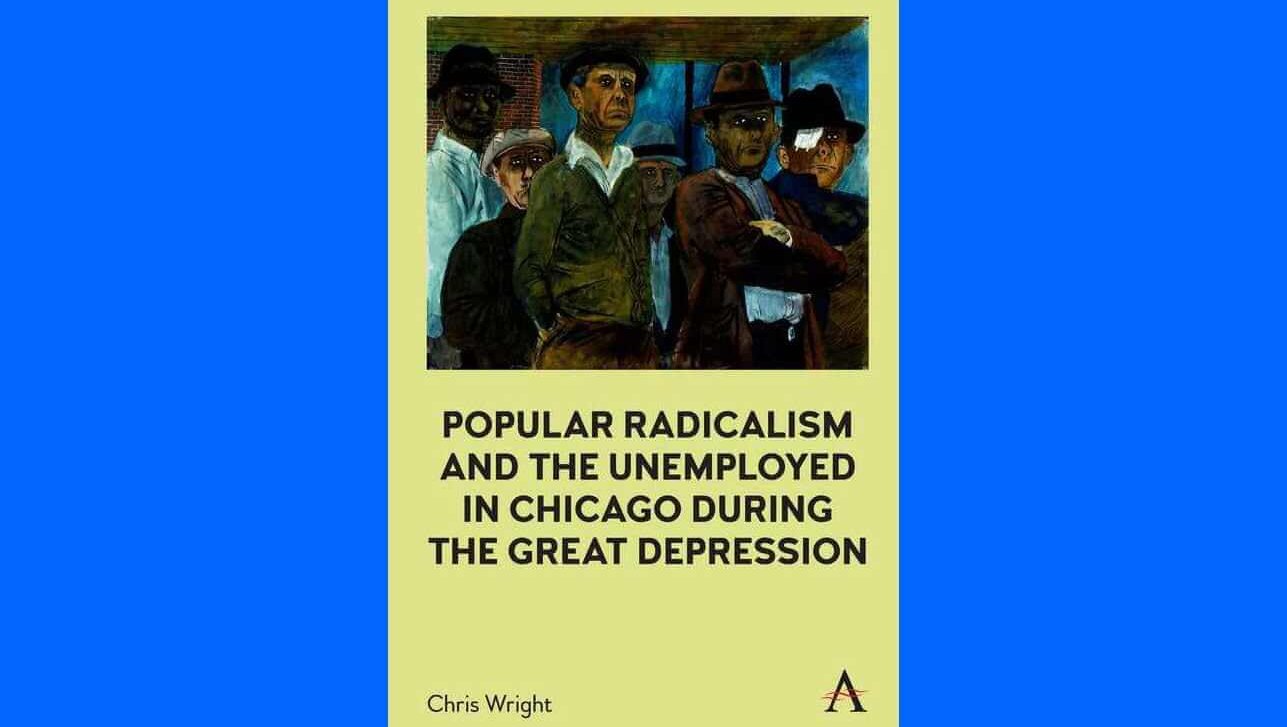A remarkable commemoration occurred recently in Winston-Salem, North Carolina–a tribute to the connections forged between civil rights and unionism 70 years ago. Even as the North Carolina legislature erects barriers to economic and political justice, a group of journalists, historians and activists managed to erect an official historical marker to recognize the quest for interracial justice that took place in an earlier period, a quest that built the foundations of civil rights in the state.

The marker is only one sentence long, “Tobacco Unionism: Strike by leaf workers, mostly black and female, June 17, 1943, ½ mile west, led to seven years of labor and civil rights activism by Local 22.” I hope it will be enough to prompt readers to access the fuller account in Robert Korstad’s Civil Rights Unionism, a remarkable story of the forging of community activism, political activism, democratic participation, with an aim for full emancipation and economic justice—all within the union movement, and years before the usual dating of the civil rights movement. Journalist Jonathan Michels is leading an effort for a fuller public history accounting of these events.
The marker doesn’t tell what happened to the union, a local of the Food, Tobacco, Agricultural and Allied Workers of America, a left-leaning member of the Congress of Industrial Organizations, the industrial union federation set up in 1935, arising out of the mass movements of workers in the 1930s. Local 22 was snuffed out in the deluge of repression that was facilitated by a monumental effort of public and private officials, using charges that it was a Communist organization. There were Communists in the leadership of Local 22; most of those Communists had joined because of the Communist Party’s (CP) commitment to racial justice. As the Cold War heated up, it was enough to justify a massive effort to stamp them out, with the side benefit of killing the most progressive union in the South.
The most remarkable aspect of the commemoration in my view was the formal apology by the Winston-Salem Journal about its institutional role in this sorry episode of repression. Among the leading figures working to kill the union was Gordon Gray, the paper’s publisher. Gray had risen in the Truman administration to assistant secretary of the army in 1947, and then Secretary of the Army in 1949. Frank Tursi’s The Winston-Salem Journal: Magnolia Trees and Pulitzer Prizes (1997) notes that he became close with the foremost right-wing journalists who were leading the red-scare crusade against the left-led CIO unions. Gray also cultivated CIA and FBI friends who served the same interest. He hired a former FBI operative to write stories alleging CP control of the union. The editorial quotes from Tursi : “the evidence strongly suggests that the publisher (Gordon Gray), whose uncle ran the tobacco company, purposely used his newspaper to bust the union.” The apology acknowledged an institutional obligation to account for its role in thwarting social justice. .
That apology got me to thinking about whether another apology is due–from the AFL-CIO. The evidence is just as damaging about the role that both the AFL and the CIO played at that time to kill Local 22.
Years ago I came across a revealing interview with Ernest Calloway, an African-American trade unionist who realized he had been a pawn in this game, in which for the AFL and the CIO (at that time, both still rivals) killing a progressive union was more vital than figuring out how to organize the anti-union bastion of the South. His interview is in sync with Tursi’s findings:

“It wasn’t until the 1948 Progressives [the Third Party effort against the Democrats] that the National CIO became interested in doing something . And in ’49…[I] got this assignment to go into North Carolina where the Communists were very strong . . . in the tobacco industry. But someone at the top of the heap, and I had heard that an agreement had been reached between the head of the Organizing Department of the CIO, fellow by the name of Allan Hayward, and Gordon Gray, who at that time was Secretary of War, and a powerful Democrat from North Carolina, see, he controlled . . . many of the major newspapers in North Carolina and was the political wheel in North Carolina. He was interested in doing something about the Communists and their strength with the CIO Political Action Committee in North Carolina. And I get the impression that many of us were sent into North Carolina, not necessarily to win elections, but to oust the Communists from the control of some of those unions. They had control of this R. J. Reynolds plant and many of the leaf houses around the state. . . And I have no reason to doubt that some sort of deal was reached at the top of the heap between Gordon Gray and the CIO, so many of us were sent in there to run these people out. And they had done a very good job in North Carolina, from the trade union point of view. “
Calloway was sent in to organize a rival CIO union, but ended up recognizing that the goal was not to win the election, but to just keep the charges of anti-Communism going so that the left-led union would lose. The AFL also came in for the game, and it worked, along with the constant barrage of the stories of Communist control and intrigue, as well as the evident difficulties of organizing among white workers for social justice unionism.
What is the value of the apology? One of the core values of truth and reconciliation commissions is to acknowledge the damage done in order to move forward based on that acknowledgement. As the AFL-CIO seeks to understand why it can’t organize workers in these times and politics, a formal acknowledgement of its past role might be useful. Gray, an anti-unionist, called the shots for the Democratic Party in the South, and it’s Gray who Haywood was willing to play power politics with. It’s pretty clear that unionism in the South and other parts of the country was vitally damaged by these kinds of decisions. Of course all of this came on a longer and even sorrier history. The AFL had long become an operating arm of U.S. foreign policy in Latin America and Europe, and by the 1940s, the CIO had taken a similar role. By the 1980s, money funneled to the AFL-CIO from the CIA comprised a major part of the AFL-CIO budget. In his interview Calloway seems clear that he had participated in a very damaging episode, and was somewhat sickened by the top institutional authorities decision to do this to the workers of R.J. Reynolds.
There’s more to it of course than the killing of just one union. Across the South, a kind of learning of how to build community-based unions strong enough at the base to confront repression was taking place. It was a learning process that I documented in my history of District 8 of the UE, Radical Unionism in the Midwest , where activists, confronted in the lower Midwest by a southern method of repression, learned how to build community based unionism in the midst of what might be called a little police state. Doing so in a decentralized organizing fashion was the key. Committing to the long term by building community-based coalitions was another. More recently Lisa Phillips’s work on the Distribution Workers, A Renegade Union, found a similar kind of learning taking place. Taken with Korstad’s book and Michael Honey’s Southern Labor and Black Civil Rights, this work prompt us to think about how and why this history matters to the present. It does. If not for the CIO’s complicity with the state, and repression of these activities, this learning might have catalyzed into a different agenda and different models for organizing the South, rather than the complacency that wrote off the south, and of the connections between labor rights and civil rights, for two generations.








1 Comment
Comments are closed.